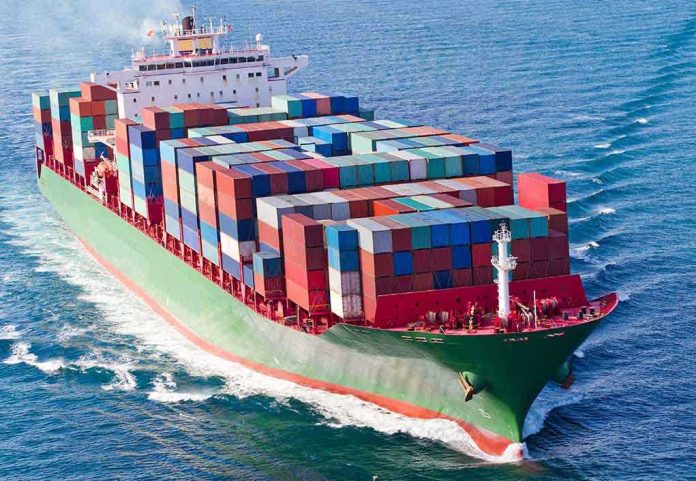
China and India’s move to resume border trade raises alarms over American economic security as global rivals quietly strengthen ties amid U.S. tariff disruptions.
Story Snapshot
- India and China are in advanced talks to reopen border trade, suspended since 2020 after deadly clashes and pandemic lockdowns.
- The renewed engagement comes as both countries seek to counter U.S. tariffs and adapt to shifting global trade patterns.
- Local Himalayan communities stand to benefit economically, but underlying border disputes and political instability in India pose significant risks.
- Experts warn the rapprochement is symbolic and may not resolve the core territorial and security issues dividing the two nuclear powers.
Historic Border Tensions Underpin Diplomatic Shift
India and China, sharing a long and disputed Himalayan border, have endured decades of unresolved territorial disputes and occasional skirmishes. Border trade—although modest, with volumes around $3.16 million in 2017–2018—has historically acted as a barometer for the health of bilateral relations and an economic lifeline for isolated Himalayan communities. In June 2020, deadly clashes in the Galwan Valley led both sides to freeze diplomatic and economic engagement, halting regular trade and worsening regional instability. The Covid-19 pandemic further compounded disruptions, cutting off vital movement and commerce for border populations. Recent years, however, have seen gradual diplomatic re-engagement, with both countries agreeing to new border patrolling protocols and confidence-building measures, setting the stage for the current negotiations.
This renewed focus on cooperation is driven not only by local needs but also by the broader context of escalating U.S. tariffs and global supply chain volatility. Both India and China face significant economic pressure as American trade policy under President Trump prioritizes domestic manufacturing and penalizes rival economies. In this climate, Beijing and New Delhi perceive regional economic engagement as a pragmatic way to bolster their own resilience and lessen dependency on unpredictable Western markets. The talks to resume border trade, along with plans to restart direct flights and relax export restrictions, signal the first major bilateral economic engagement since the 2020 border crisis. While the process is cautious and laden with mutual distrust, it marks an important step in efforts to stabilize the region and assert sovereignty on both sides.
Key Stakeholders and Power Dynamics
The principal actors in these negotiations are the Chinese Foreign Ministry—represented by Foreign Minister Wang Yi—and the Indian Ministry of External Affairs. Both governments wield strong central control over their border policies and have a history of tightly managing diplomatic communications, especially during sensitive periods. Local Himalayan merchants and communities, who have borne the brunt of economic isolation, are directly affected and stand to benefit significantly from any resumption of trade. Yet, the diplomatic engagement remains cautious: both sides are wary of repeating past mistakes, and domestic political disputes—particularly in India over election irregularities—threaten to undermine internal consensus. Border security forces will be responsible for implementing any agreements reached, adding another layer of complexity to an already delicate process.
China’s motivation centers on stabilizing its southwestern frontier, expanding regional trade influence, and counterbalancing the impact of U.S.-led trade disruptions. India, for its part, aims to revive economic activity in its border regions, reduce the risk of renewed conflict, and reinforce its sovereignty in a strategically sensitive area. Both sides are acutely aware that while economic engagement may serve as a valuable confidence-building measure, it cannot alone overcome the deep-seated mistrust and unresolved territorial issues that have defined the relationship for decades. Political leaders, national security advisors, and local authorities each play influential roles in shaping the pace and tenor of the talks.
Current Developments and Diplomatic Calculations
As of August 2025, bilateral talks are underway to reopen border trade posts, with Chinese Foreign Minister Wang Yi scheduled to visit New Delhi for the first time in over three years. India is reportedly preparing to resume direct flights to China, and Beijing has relaxed export curbs on key fertilizer ingredients, signaling goodwill. However, the Indian government has been conspicuously silent in public statements, reflecting both the sensitivity of the negotiations and ongoing political instability at home. Confidence-building measures under discussion include new protocols designed to prevent future flashpoints and avoid a repeat of the deadly 2020 clashes. The timeline for progress is closely watched, as July saw India’s Foreign Minister visit Beijing, and the upcoming 24th round of boundary negotiations is expected to clarify each country’s red lines and expectations.
Despite the fresh diplomatic overtures, analysts remain divided. Some view the talks as a pragmatic response to global trade disruptions and an important foundation for regional stability. Others caution that without substantive progress on the underlying border dispute, any economic thaw may prove fleeting. The process is further complicated by the lack of a unified domestic consensus in India and the possibility of renewed tensions if negotiations stall or are derailed by external events.
Impact Assessment and Long-Term Outlook
In the short term, the resumption of border trade promises an economic boost for Himalayan communities and an improved diplomatic climate between the two Asian giants. The revival of trade and commercial flights could enhance livelihoods, reduce isolation, and lay groundwork for expanded cross-border commerce. However, the long-term stability of the region hinges on sustained diplomatic engagement and the resolution of underlying disputes. Without concrete agreements on sovereignty and security, the risk of renewed confrontation remains real. The developments also have broader implications for U.S. interests, as stronger India-China ties could undermine American efforts to contain Beijing’s influence and secure fair trade practices. Ultimately, the durability of the current thaw and the effectiveness of new confidence-building measures will require close monitoring by American policymakers and allies.
India and China eye resumption of border trade #FMTNews #FMTBusiness https://t.co/u35y8XDeQW
— Free Malaysia Today (@fmtoday) August 14, 2025
Expert opinion is clear: while the symbolic importance of border trade resumption should not be underestimated, it is not a substitute for resolving the fundamental issues that have divided these two nuclear-armed neighbors. The process reflects cautious optimism amid persistent geopolitical challenges, and the situation remains fluid. For American conservatives, the story is a sober reminder that global rivals are adapting fast to shifting trade realities—often in ways that could challenge U.S. economic and strategic interests if not met with vigilance and resolve.
Sources:
China and India in talks to restart Himalayan border trade halted since 2020
India and China work to improve ties amid Trump’s unpredictability
Chinese Foreign Minister Wang Yi to visit India on August 18
India, China plan new confidence-building measures to avert flashpoints along disputed boundary







